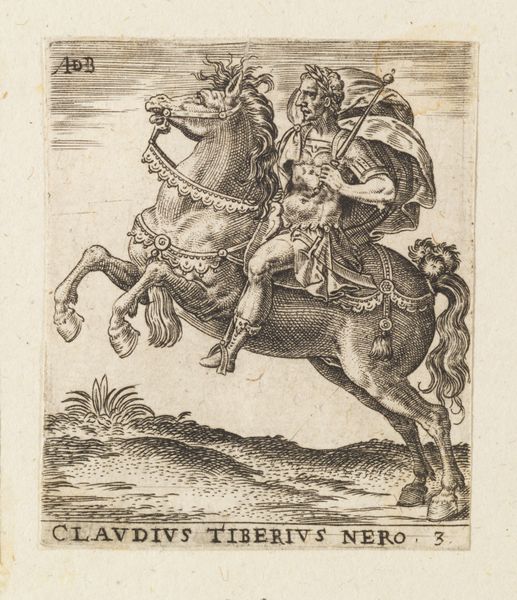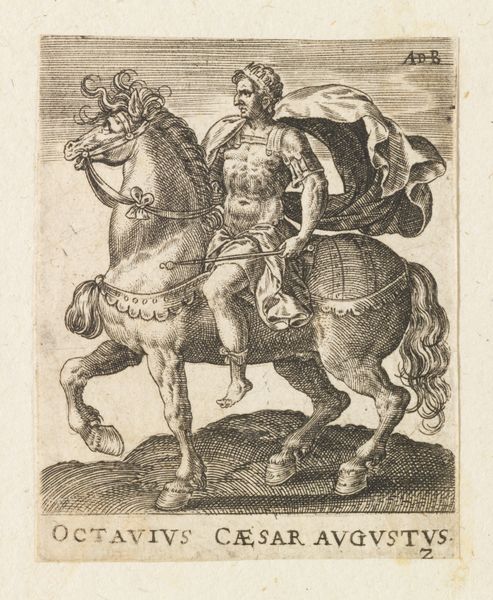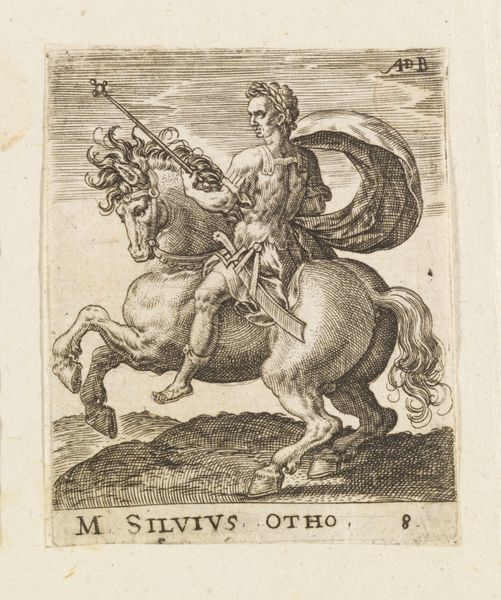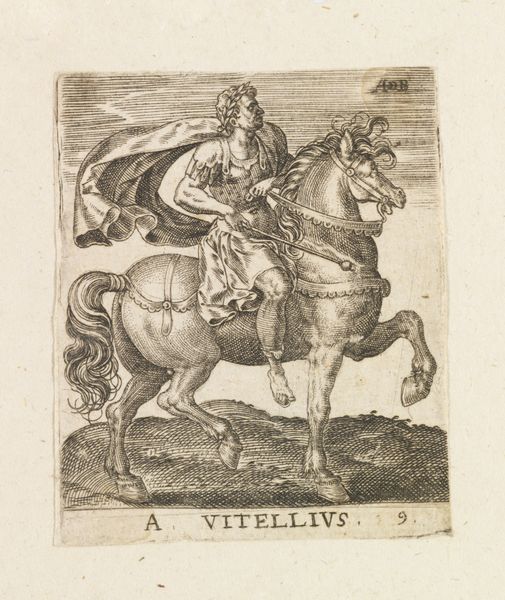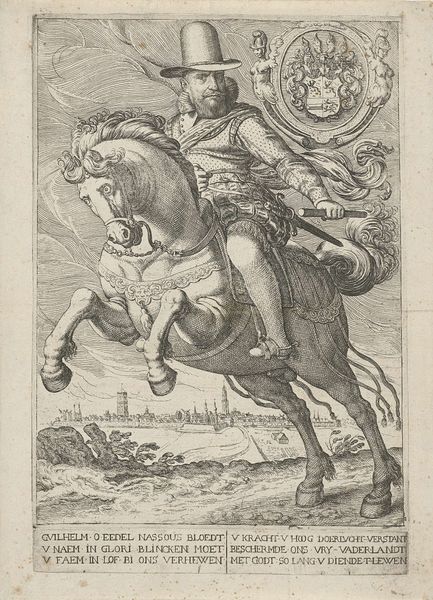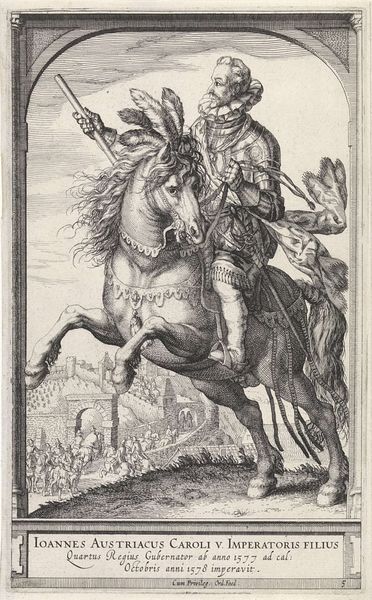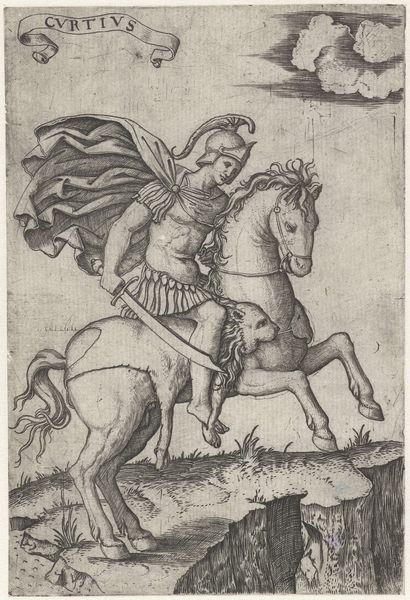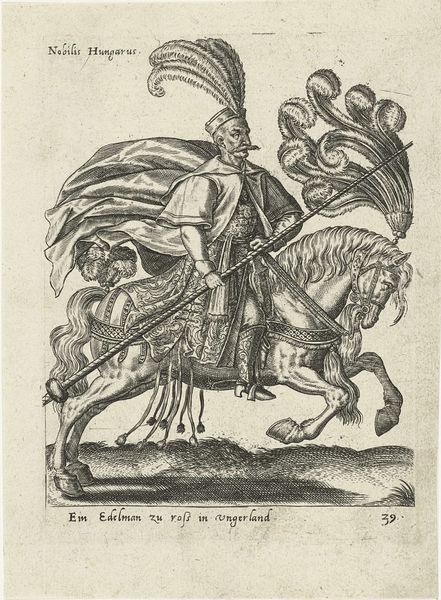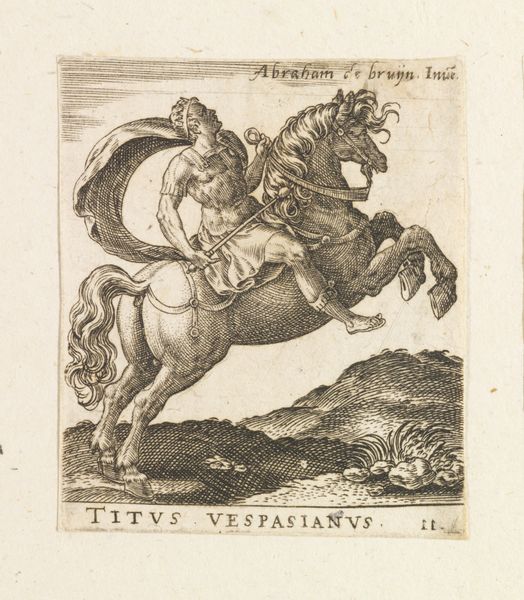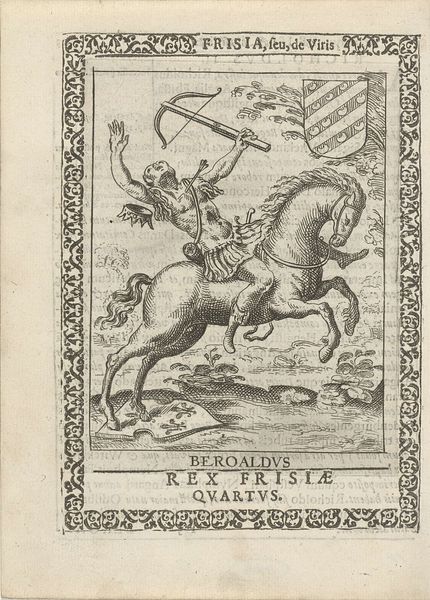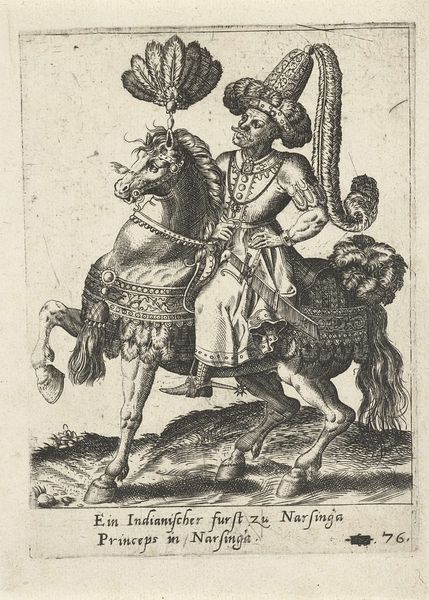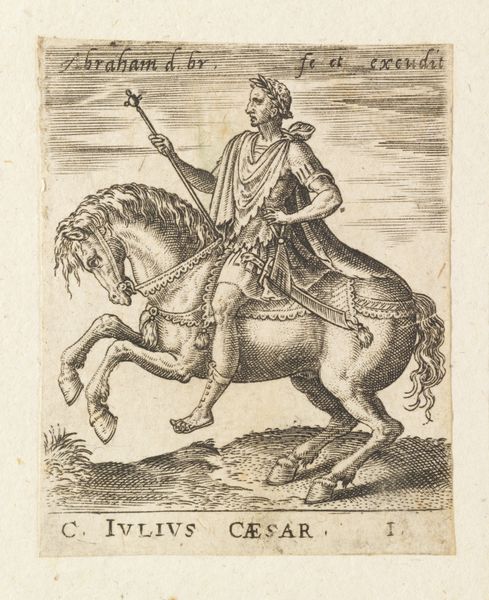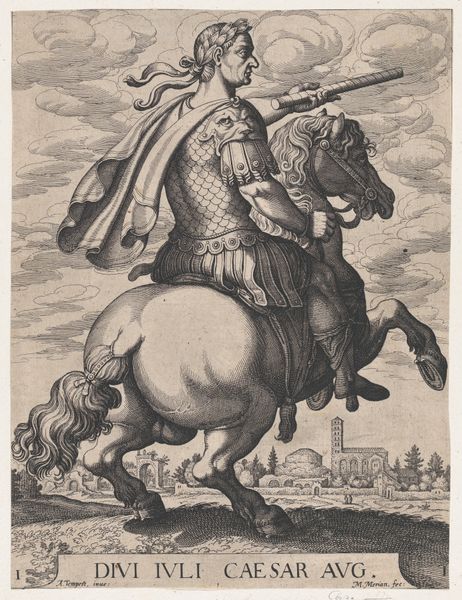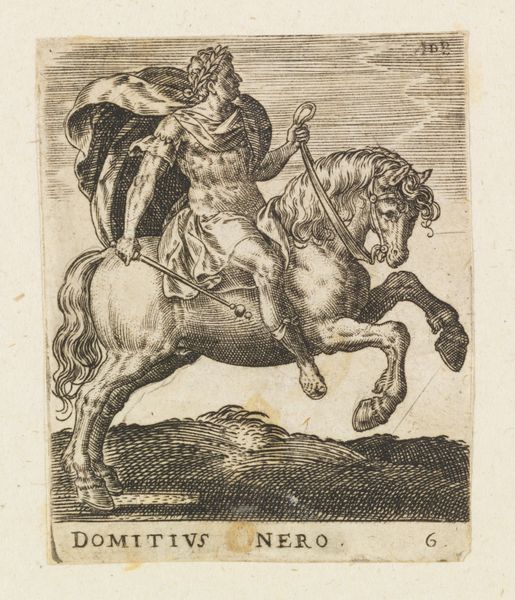
Tiberius Claudius Nero, from "Twelve Caesars on Horseback" 1560 - 1592
0:00
0:00
drawing, print, engraving
#
portrait
#
drawing
# print
#
figuration
#
ancient-mediterranean
#
horse
#
history-painting
#
engraving
Dimensions: Sheet: 2 3/8 × 1 7/8 in. (6 × 4.7 cm)
Copyright: Public Domain
Abraham de Bruyn’s engraving portrays Tiberius Claudius Nero, an emperor of Rome, on horseback with a commander’s baton. The laurel wreath, an emblem of victory, adorns Tiberius's head, symbolizing triumph and imperial authority. The baton, a symbol of leadership, echoes through time, and parallels scepters held by kings and generals across cultures. Think of the Egyptian pharaohs with their staffs. This motif embodies power, and recurs in various forms, reflecting humanity's perennial fascination with authority. Here, it serves not only as a symbol of command but also engages our collective memory, resonating with the archetype of the leader. The powerful, rearing horse beneath Tiberius elicits a visceral response, stirring a deep, subconscious recognition of raw power and dominance. These symbols create a powerful connection, reminding us of the cyclical nature of history, where the echoes of past empires continue to shape our understanding of power today.
Comments
No comments
Be the first to comment and join the conversation on the ultimate creative platform.
